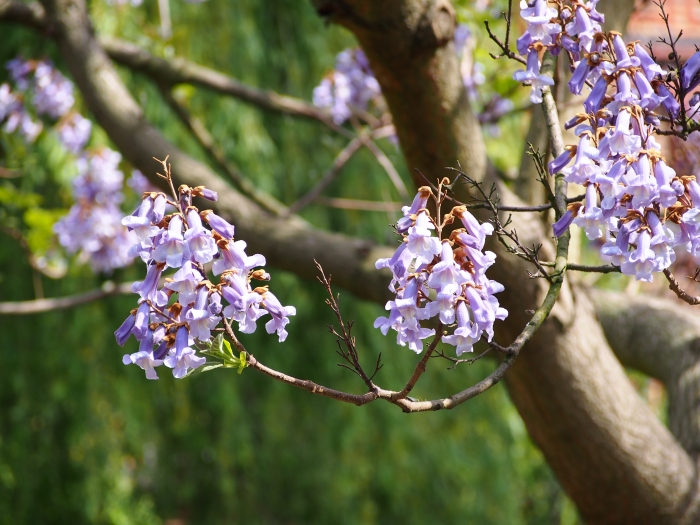Princess Tree
(Paulownia tomentosa)
Princess Tree (Paulownia tomentosa)
/
/

Agnieszka Kwiecień, Nova
CC BY-SA 4.0


















































































Estimated Native Range
Summary
The princess tree is valued for its rapid growth, ornamental flowers, and ability to thrive in urban environments due to its pollution tolerance. It is used for shade, ornamental plantings, and reforestation projects. However, it is also recognized for its invasive potential outside its native range, particularly in the Eastern United States and parts of Europe. It requires full sun and can grow in various soil types, with a preference for well-drained soils. It can even sprout from small cracks in pavements and walls. After wildfires, the resilient roots can regenerate new stems quickly. Despite its beauty, gardeners should be cautious as it can become invasive, and pollarded trees will not produce flowers since they only form on mature wood.CC BY-SA 4.0
Plant Description
- Plant Type: Tree
- Height: 30-80 feet
- Width: 30-40 feet
- Growth Rate: Rapid
- Flower Color: Purple
- Flowering Season: Spring
- Leaf Retention: Deciduous
Growth Requirements
- Sun: Full Sun, Part Shade
- Water: Low
- Drainage: Fast, Medium
Common Uses
Bee Garden, Bird Garden, Butterfly Garden, Drought Tolerant, Fragrant, Hummingbird Garden, Low Maintenance, Salt Tolerant, Showy Flowers
Natural Habitat
Native to forest margins and open woodlands in central and western China
Other Names
Common Names: Foxglove Tree , Karritree , Empress Tree , Princesstree , Royal Paulownia , Chinesischer Blauglockenbaum , Paulownia Impérial , Anna Paulownaboom , Kejsarträd , Empress Tree
Scientific Names: Paulownia tomentosa , Paulownia imperialis , Paulownia coreana , Paulownia tomentosa var. lanata , Paulownia lilacina , Paulownia tomentosa var. tomentosa , Bignonia tomentosa , Paulownia recurva , Incarvillea tomentosa , Paulownia grandifolia
GBIF Accepted Name: Paulownia tomentosa (Thunb.) Steud.